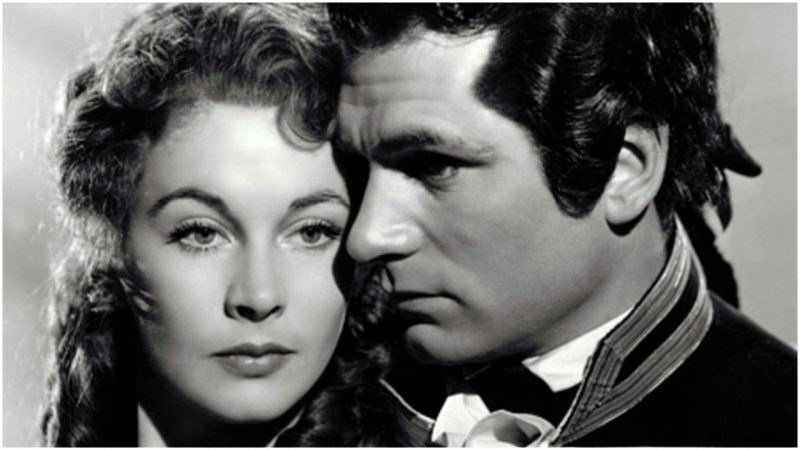For nearly 20 years, Vivien Leigh and Laurence Olivier were one of Hollywood’s most charismatic power couples. From its secret start to its destructive demise, their fiery relationship was so intense it bordered on insanity. In his early letters to her, Olivier revealed an all-consuming lust for Leigh’s beauty and spark. The only problem when they first met: They were both married— to other people.
Born Vivian Mary Hartley in 1913 in Darjeeling, India, the daughter of upper-crust British colonialists, Vivian first appeared on a stage at age 3, reciting “Little Bo Peep” with her mother’s amateur theater company. Young Viv was sent to boarding school in London when she was 6 where she began telling friends she wanted to be an actress when she grew up. When she was 18, she enrolled in London’s prestigious Royal Academy of Dramatic Arts but dropped out shortly thereafter when she met and married Herbert Leigh Holman, a 31-year-old barrister who disapproved of the theater. The next year, she gave birth to a daughter. Still, she couldn’t resist the lure of performing. Soon she took small roles in films and appeared in plays under her new professional name, Vivien Leigh.
The early years of Laurence Kerr Olivier also set him on a path to the theater. The youngest child of an Anglican priest, he frequently moved with his family to various parishes, where he learned the skills of quick assimilation and absorbed the ritualized dramatic cadences of his father’s sermons. He began performing in school plays at the age of 10, and showed so much promise and natural talent that even his haughty father recognized his son’s future lay in theater.
Laurence studied acting for a year before joining a repertory company, where he played a wide variety of roles and where he met the daughter of two actors, Jill Esmond, whom he wed in 1932. Their marriage was tepid from the start. Later he wrote in his autobiography that he had basically settled for her: “I wasn’t likely to do any better at my age.” Though Esmond bore a son, Tarquin, some have suggested that she was in fact a lesbian.
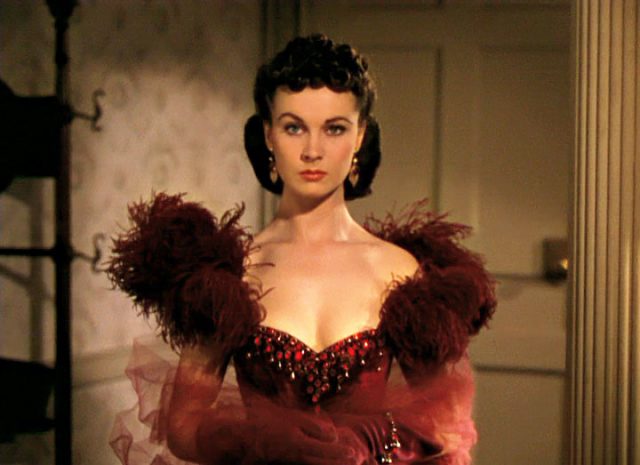
Leigh fell instantly in love with Olivier when she saw his commanding performances onstage in the mid 1930s. He was magnetic and hypnotizing. “That’s the man I’m going to marry!” she told a friend, according to a 2003 biography by Michelangelo Capua. The friend replied: “I just want to remind you that you are married and so is he.” To which Leigh gave the prescient reply: “It doesn’t matter. I’ll still marry him one day!”
Life mirrored art when Leigh and Olivier were cast as on-screen lovers in the 1936 drama Fire Over England, and they fell into a torrid off-screen romance. While their relationship became something of an open secret in Hollywood, studio heads were scandalized. Public knowledge would’ve cratered their careers. “I couldn’t help myself with Vivien. No man could,” Olivier said according to a Michael Munn biography. The two began a steamy correspondence, evidence of which exists to this day. London’s Victoria and Albert Museum obtained Olivier’s letters to Leigh in 2013, recently cataloged them and made them available to the public. “O my darling little love I do long for you so,” Olivier wrote, according to The Hollywood Reporter, which gained access to the letters in September 2017. “Oh my hearts blood it is unbearable without you.”
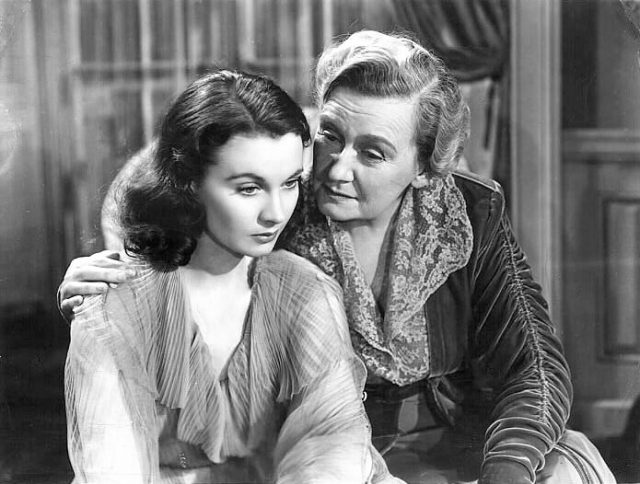
During the height of their passions, Olivier and Leigh were both cast in defining film roles. He helped her land the part of Scarlett O’Hara in Gone With the Wind. Interestingly, they both worried that Margaret Mitchell’s Southern soap opera would be a disaster. He worried that if her career failed, she would “become a bore,” though he hastened to add not to him but to herself. In fact, Leigh won an Academy Award for Best Actress, and the film is today’s number 1 box-office hit (in adjusted-for-inflation dollars).
Meanwhile, Olivier was cast as Heathcliff in Wuthering Heights. (Leigh wanted to star opposite her lover, but studio heads deemed her unsuitable.) Their separation fueled the fire of their passion. “I woke up absolutely raging with desire for you my love,” Olivier wrote, as reported by The Guardian. “Oh dear God how I did want you. … If we loved each other only with our bodies I suppose it would be alright. I love you with much more than that. I love you with, oh everything somehow, with a special kind of soul.”
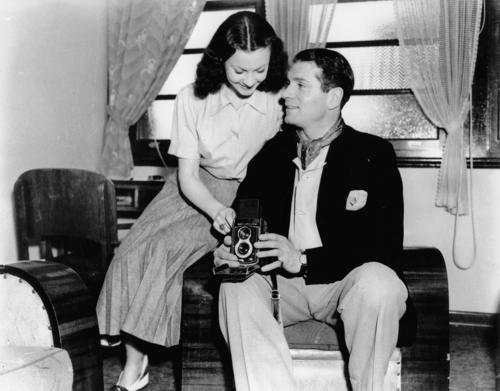
Still, they knew they had to pretend to keep their relationship under wraps until they were legally free. “We are a popular scandal, or rather a public one,” Olivier wrote in 1939, according to The Guardian. “Therefore it is only reasonably good taste to be as unobtrusive as possible. Can you dance and be gay and carry on like the gay happy hypocrite days? No my love you cannot. Why because of your fame, tripled with our situation—quadrupled with the fame there off [sic].”
By 1940 both Leigh’s and Olivier’s spouses agreed to divorce; the exes gained respective custody of Leigh’s daughter and Olivier’s son. In August of that year, Leigh and Olivier got married in a quiet ceremony in California, attended only by their hosts and witnesses, who included Katharine Hepburn. They went on to star together in movies like That Hamilton Woman and stage productions such as Romeo and Juliet. But acceptance of their now-public relationship didn’t grant them immunity to criticism; in fact, some critics turned a harsher eye on the two. A 1940 review of Romeo and Juliet in Time magazine recognized him as a “great romantic lover” and her as “the most talked-of cinemactress in the world,” but it also damned their production as “not merely weak or spotty, but calamitous.”
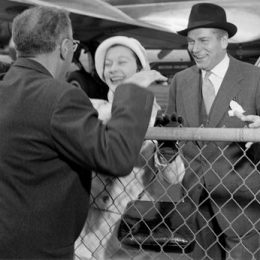
Though they would stay married for 20 years, cracks in the foundation appeared early on. Some critics considered him the better actor and unfairly condescended to her as a pretty face, a proper British actress unable to express emotion.
She showed signs of mental instability: She would become enraged and yell at Olivier but alarmingly not be able to recall the incident the next day. While actresses today can discuss mental illness (as Carrie Fisher did), back then a diagnosis of bipolar disorder or manic depression was considered a shameful secret. She experienced manic whirlwind highs and suffered despondent dark lows. Her physical health faltered too: Leigh fell ill with tuberculosis, which required an extended and solo hospitalization, as Olivier was working on a film. Her lungs would never completely recover. Then in 1945, she suffered a miscarriage, which sent her on a downward spiral of depression. While touring to perform in Australia and New Zealand, Leigh and Olivier had a very public fight in which they slapped each other. The tour exhausted them and precipitated the collapse of their relationship. Olivier would later write that it was in Australia that he “lost Vivien.”
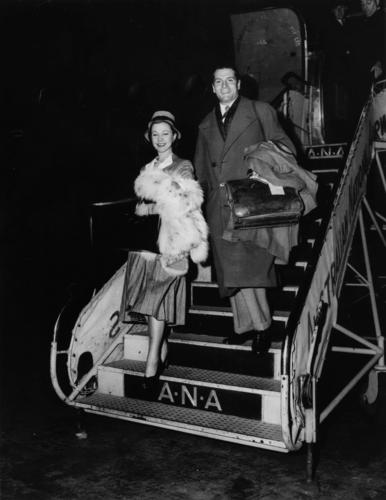
Throughout their turbulent relationship, they both continued to work. Leigh brought her emotional vulnerability to the role of Blanche DuBois in both the stage and film versions of A Streetcar Named Desire, which won her a second Best Actress Oscar. But her behavior was becoming increasingly erratic: she wandered neighborhoods naked and fell into bed with a stranger, according to The Hollywood Reporter. Friends found her difficult. In 1953, she was cast to star in Elephant Walk opposite Peter Finch, with whom she was having an on-again, off-again affair. But she became so out of control, suffering hallucinations and veering from fierce rages to quivering fits, that producers called Olivier to the set to deal with his wife. Ultimately, she was fired from the film, and replaced by Elizabeth Taylor. And then another miscarriage triggered another descent into deep depression. At one point, she threatened suicide.
Their marriage was effectively over. Leigh took up with actor Jack Merivale in 1958. Olivier fell in love with actress Joan Plowright. Leigh and Olivier were divorced in 1960.
In his autobiography, Olivier acknowledges Leigh’s mental illness almost as a third and unspeakable member of their relationship: “Throughout her possession by that uncannily evil monster, manic depression, with its deadly ever-tightening spirals, she retained her own individual canniness–an ability to disguise her true mental condition from almost all except me, for whom she could hardly be expected to take the trouble.”
Leigh died in 1967 at age 53 of tuberculosis. Olivier continued to act almost until his last days, making a final screen appearance in 1989, the year he died of heart failure at age 82.
